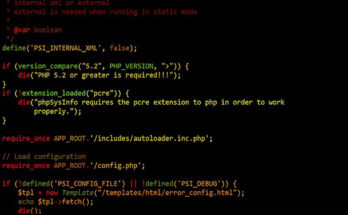
Unveiling the Truth: Exploring the Trend of Weight Loss Shots

February 23 , 2024 Imphal By Banti Phurailatpam:
In the quest for rapid weight loss and a slimmer physique, individuals often seek out various methods and supplements to expedite their journey. One such trend that has gained popularity in recent years is the use of weight loss shots. These injections, often touted as a quick fix for shedding unwanted pounds, promise rapid results without the need for extensive dieting or exercise. But what exactly are weight loss shots, and do they live up to their claims? In this article, we delve into the phenomenon of weight loss shots, examining their purported benefits, potential risks, and the scientific evidence behind their efficacy.
Understanding Weight Loss Shots
Weight loss shots, also known as lipotropic injections or fat-burning injections, typically contain a combination of ingredients designed to boost metabolism, enhance fat burning, and promote weight loss. These injections are administered subcutaneously or intramuscularly, often in the abdomen or buttocks, by a healthcare professional or trained provider.
Typical components of weight-loss injections include:
Lipotropic Agents: These are compounds that help facilitate the breakdown and removal of fat from the liver. Examples include methionine, inositol, choline, and betaine.
Vitamins and Minerals: Weight loss shots often contain B vitamins (such as B12) and other nutrients believed to support energy metabolism and promote overall health.
Amino Acids: Certain amino acids, such as L-carnitine, are believed to enhance fat metabolism and energy production, potentially aiding in weight loss.
Purported Benefits of Weight Loss Shots
Proponents of weight loss shots claim various benefits, including:
Increased Metabolism: The ingredients in weight loss shots are purported to boost metabolism, leading to increased calorie burning and fat loss.
Enhanced Fat Burning: Lipotropic agents are believed to promote the breakdown and elimination of fat from the body, particularly from the liver.
Improved Energy Levels: B vitamins and other nutrients in weight loss shots may help support energy metabolism, potentially leading to increased energy levels and improved vitality.
Appetite Suppression: Some individuals report a reduction in appetite and cravings after receiving weight loss shots, leading to decreased calorie intake and subsequent weight loss.
The Evidence Behind Weight Loss Shots
While weight loss shots may sound promising, it’s essential to examine the scientific evidence supporting their efficacy. Research on the effectiveness of lipotropic injections for weight loss is limited, and existing studies have produced mixed results.
Limited Clinical Evidence: Most studies investigating the effects of lipotropic injections on weight loss are small-scale and of short duration, making it challenging to draw definitive conclusions about their effectiveness.
Placebo Effect: Some individuals may experience weight loss after receiving weight loss shots due to the placebo effect or other lifestyle changes, rather than the injections themselves.
Lack of Long-Term Data: There is a lack of long-term data on the safety and efficacy of weight loss shots. Many studies have focused on short-term outcomes, leaving unanswered questions about the sustainability and potential risks of prolonged use.
Potential Risks: Like any medical procedure or intervention, weight loss shots carry potential risks and side effects, including pain, inflammation, infection at the injection site, allergic reactions, and interactions with other medications or supplements.
Considerations Before Trying Weight Loss Shots
Before considering weight loss shots as a solution for shedding unwanted pounds, it’s essential to consider the following factors:
Consultation with a Healthcare Professional: Before undergoing any weight loss treatment, including weight loss shots, it’s crucial to consult with a qualified healthcare professional. They can evaluate your overall health, assess your weight loss goals, and provide personalized recommendations based on your individual needs and medical history.
Comprehensive Approach: Weight loss is best achieved through a comprehensive approach that includes a balanced diet, regular physical activity, adequate sleep, stress management, and other healthy lifestyle habits. While weight loss shots may offer temporary results, sustainable weight management requires long-term lifestyle changes.
Cost and Accessibility: Weight loss shots can be costly, and insurance may not cover the expense. Consider the financial implications and accessibility of ongoing treatments before committing to weight loss shots as a weight loss strategy.
Conclusion
In conclusion, weight loss shots are a trend that promises rapid weight loss and improved body composition through the administration of lipotropic agents, vitamins, and other nutrients. While some individuals may experience short-term benefits from these injections, the scientific evidence supporting their efficacy is limited, and potential risks and side effects must be considered.
Before trying weight loss shots, it’s essential to consult with a healthcare professional, evaluate your overall health and weight loss goals, and consider the potential risks and benefits. Sustainable weight loss is best achieved through a comprehensive approach that includes healthy eating, regular exercise, and lifestyle modifications, rather than relying solely on quick-fix solutions like weight loss shots. By focusing on long-term lifestyle changes, you can achieve lasting results and improve your overall health and well-being.
Unveiling the Truth: Exploring the Trend of Weight Loss Shots Read More

















